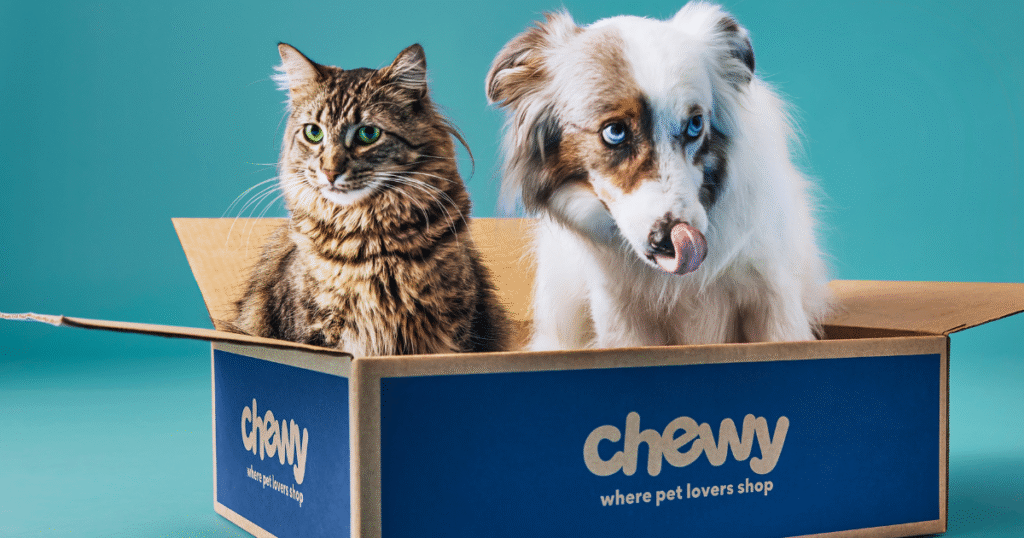Membership models in retail are no longer experiments. They’re shaping the economics of how brands grow, retain, and profit from their customers. The latest proof point comes from Chewy+, the pet retailer’s membership program, which is already influencing how customers shop, spend, and stick with the brand.
In this article, we’ll break down the highlights from Chewy’s 2Q25 earnings, explore how Chewy+ strengthens its subscription engine, and unpack the broader lessons for retailers exploring membership models in retail.
TL;DR
- Chewy+ accounted for ~3% of monthly sales in July 2025, despite being new.
- Members shop more often, across more categories, and lean heavily on the mobile app.
- Autoship adoption climbs alongside Chewy+, now 83% of total sales.
- Membership shifts more of a customer’s pet budget to Chewy earlier in their journey.
- Gross profit contribution is positive, even at slightly lower margins.
- Key lesson: The best growth lever is deepening relationships with existing customers.
How Membership Models in Retail Reshape Customer Behavior
Retailers have long chased new customers with advertising spend. But membership models in retail flip the focus inward, encouraging customers to buy more, more often, with stronger loyalty.
Chewy’s case shows this clearly:
- Members shop with higher frequency.
- They attach more product categories (food, meds, treats, and toys).
- They engage more through the Chewy mobile app.
This pattern echoes lessons from Amazon Prime, Costco, and Walmart+. A membership program, even one without massive perks, creates a psychological and behavioral shift. Customers rationalize the membership by using it more, effectively pulling future spending forward.
Chewy+ and the Economics of Autoship
One of the most striking data points is that 83% of Chewy’s total sales now come from Autoship. Autoship ensures customers get essentials like pet food on a recurring schedule, reducing churn and smoothing revenue.
Chewy+ enhances this dynamic by nudging more customers into Autoship adoption. Membership provides convenience, predictability, and an easier reason to consolidate their pet budget with Chewy rather than spreading it across other retailers.
This flywheel looks like this:
- Join Chewy+ for perks.
- Shift pet supply purchases to Chewy.
- Adopt Autoship for recurring needs.
- Spend more over time while sticking with Chewy.
For retailers, this highlights how membership models in retail amplify existing subscription revenue streams, creating compounding effects on retention and lifetime value.
Why Incremental Profit Still Matters
Chewy noted that while Chewy+ margins run slightly lower than the company average, incremental gross profit remains positive. That’s crucial.
It suggests:
- Membership drives net new incremental spend rather than cannibalizing existing behavior.
- Lower-margin perks are offset by higher frequency and broader category adoption.
- Positive contribution creates scalability, each new member adds value without heavy marketing spend.
For retailers considering membership programs, this is the financial proof point: it’s not just about engagement metrics, but about ensuring the economics scale profitably.
Membership Models in Retail Reduce Acquisition Costs
Chewy isn’t blasting ads to acquire members. Instead, it’s converting existing customers into members at near-zero acquisition cost. That’s a powerful contrast to traditional customer acquisition strategies, where paid ads often dominate budgets.
This approach unlocks three benefits:
- Lower CAC (Customer Acquisition Cost): No extra dollars wasted on external ads.
- Faster revenue per active customer: Membership accelerates wallet share.
- Higher long-term profitability: Retention compounds, reducing churn risk.
The lesson here is clear: membership models in retail can drive growth without expensive customer acquisition campaigns, making them especially attractive in environments where ad costs are rising.
Lessons from Chewy+ for Retail Leaders
Chewy+ illustrates broader truths about membership models in retail:
1. Focus on Deepening Relationships
Growth doesn’t have to mean chasing new audiences. Instead, deepen relationships with existing customers and extract more value over time.
2. Leverage Subscriptions as Anchors
Pairing a membership with recurring subscription services builds stability into revenue streams.
3. Optimize for Wallet Share, Not Margins Alone
Even if margin per transaction dips, the overall customer profitability rises when wallet share expands.
4. Keep Acquisition Costs Low
The magic of membership is in converting customers you already have, without burning cash on external campaigns.
External Perspectives on Membership Models in Retail
Chewy isn’t alone in betting on membership. According to Harvard Business Review, companies that build loyalty programs aligned with convenience and value see stronger long-term retention than those that compete on price alone.
Meanwhile, The Economist has highlighted how subscription and membership models smooth revenue volatility, creating resilience during economic downturns. And Forbes continues to track the rise of “subscription fatigue,” urging companies to design memberships that genuinely deepen customer experience rather than simply extract fees.
Chewy+ positions itself in line with these best practices: focusing less on flashy perks and more on seamless customer behavior shifts.
FAQs on Membership Models in Retail
1. What are membership models in retail?
Membership models in retail are loyalty-driven programs where customers pay (or opt-in) for perks that encourage higher engagement, repeat purchases, and greater wallet share.
2. How is Chewy+ different from Autoship?
Autoship is Chewy’s subscription delivery service, while Chewy+ is the membership program that increases adoption of Autoship and other shopping behaviors.
3. Why are retailers investing in membership models?
Because they improve customer retention, reduce acquisition costs, and drive long-term profitability compared to chasing new customers.
4. Do membership models always reduce margins?
Not always. Margins may dip slightly, but the incremental profit from higher order frequency and loyalty typically outweighs this.
5. What industries benefit most from membership models?
Retail, e-commerce, grocery, and consumer goods benefit the most, especially when paired with recurring needs like food, medicine, or household staples.
Conclusion: The Real Growth Lever is Loyalty
Chewy+ demonstrates the new playbook for retailers: growth comes from deepening relationships. By layering a membership program on top of Autoship, Chewy has created a flywheel of loyalty, wallet share, and incremental profitability.
For retail leaders, the takeaway is simple: membership models in retail are now strategic necessities.
Related content you might also like:
- What to Expect from the Moto Acquisition
- McDonald’s Digital Transformation: 3 Lessons
- Harnessing AI for Enhanced Profitability in Times of Diminishing Demand
- On Amazon’s Digital Book Lending Service
- The Rise of Chinese-based Consumer Tech Companies and How They Successfully Enter the U.S. Market


